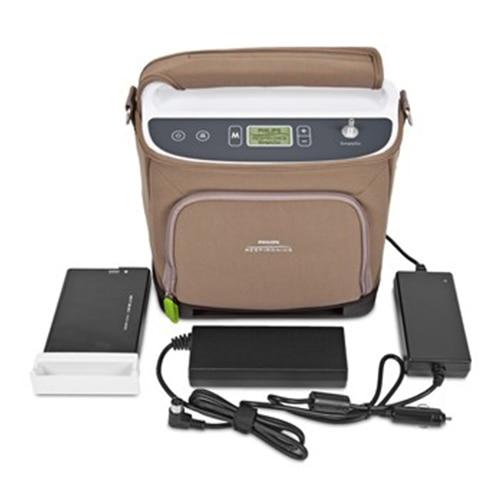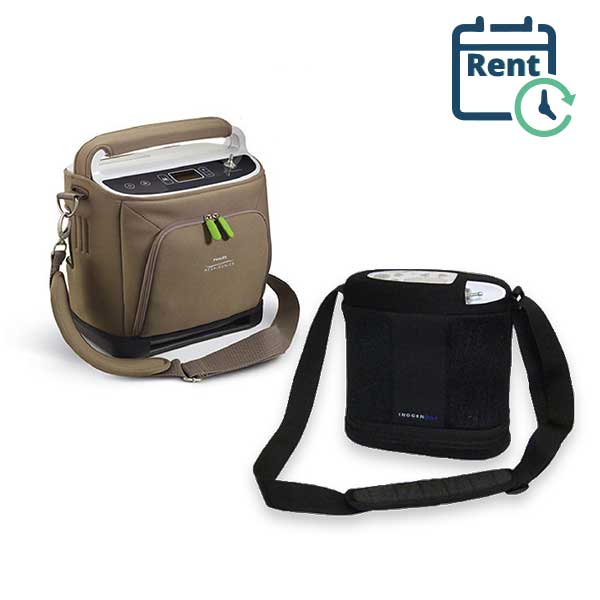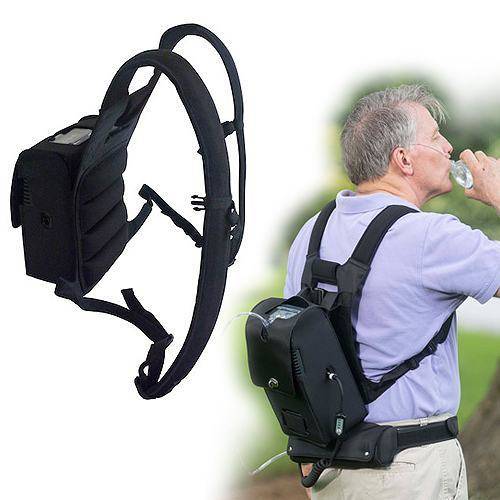See This Report about Portable Oxygen Concentrators
The smart Trick of Portable Oxygen Concentrators That Nobody is Talking About
Table of ContentsSome Of Portable Oxygen ConcentratorsMore About Portable Oxygen ConcentratorsGetting My Portable Oxygen Concentrators To Work6 Easy Facts About Portable Oxygen Concentrators Described
Stationary oxygen concentrators were once the criterion, yet these storage tanks might weigh 50 extra pounds and were very difficult (Portable Oxygen Concentrators). Now, mobile oxygen concentrators finish the job, and they can match a handbag or purse! The only point you ought to keep in mind is that mobile concentrators have a lot more restricted oxygen distribution abilitiesThere are 2 major types of portable oxygen concentrators: pulse dose and continuous circulation. As the name recommends, pulse dose concentrators offer oxygen periodically, just turning on when you breathe in. This kind of tool is normally advised for COPD clients with restricted oxygen requirements, as the quantity of O2 that a pulse dose concentrator can provide is relatively reduced.
This device can supply up to 3,000 m, L of oxygen every minute, while pulse dose devices often tend to cap out at 1250 m, L. Continual flow tools are the go-to for most COPD patients, as they're suitable for individuals who require two to 5 litres of oxygen a min.
Currently that you have this guide to the various sorts of portable oxygen equipments, pick the most effective gadget with the help of your doctor. You can discover our blogs for more information concerning the kinds of portable oxygen offered and our various other products, like tubing and cannulas. Or you can call us straight with any type of particular concerns you may have.
What Does Portable Oxygen Concentrators Mean?
We know Americans use domestic variations in home care situations. We questioned just how well these portable oxygen concentrators would certainly work in hospitals. POC concentrators increase the proportion of oxygen in ambient air people take a breath in, whenever they require an increase. Private-use ones are tiny adequate to carry about, and might aid avoid the requirement to check out busy facilities and health centers.
When it comes to mobile oxygen therapy, there are two major options for distribution. These are mobile oxygen cylinders which contain pressed oxygen gas, or oxygen concentrators, which use a battery powered system to press and filter air, in order to develop a constant supply of concentrated oxygen. In this post, AMS Composite Cylinders Technical Director, Tony Morrin, compares both, considering the pros and cons of each oxygen distribution system for NHS medical oxygen users in regards to patient autonomy.

Mobile Oxygen Concentrator Oxygen pureness is consistently higher when supplied from cylinders it never drops below 99. 6%, despite the circulation price called for. In battery-powered concentrators, pureness is impacted by flow price, and might be 90% or much his explanation less, relying on the devices. Whilst oxygen concentrators can be valuable for individuals that call for a reduced circulation of oxygen, cyndrical tubes provide higher focus that can be a lot more appropriate for individuals with high flow demands.
What Does Portable Oxygen Concentrators Do?
Both systems call for the person to carry around tools. For cylinders, this will certainly consist of carrying a bag (and sometimes a trolley) and for portable oxygen concentrators this will certainly include the bag, cart and power battery charger. Weight wise, mobile oxygen concentrators can be comparable in weight, or in some cases, lighter than typical aluminium cyndrical tube systems.
They will certainly have to boost substantially if they are to offer the very same level of efficiency as comparable composite cyndrical tubes. Oxygen always lugs a Continued security threat. On one hand, need to cylinders spring a leak, they can produce an oxygen abundant setting that could result in a boost in fire threat.

The distinction is that there are considerable upfront prices to buying a portable oxygen concentrator, yet lower running prices utilizing cyndrical tubes allows the purchaser to spread out the cost over an extensive period of time. One minor drawback of a mobile oxygen concentrator is the noise mobile systems make a considerable quantity of noise throughout operation, which many people discover distracting.
10 Easy Facts About Portable Oxygen Concentrators Shown

Our premium carbon composite cylinders provide high pressure (300 Bar), low weight, and NLL (Non-Limited Life) performance, and are certified for use worldwide. Further information get redirected here about AMS Composite Cylinders Ltd can be found at .
Oxygen concentrators are developed with user movement in mind. Whether it's a desktop computer version for home use or a smaller, light-weight version for on-the-go, these tools allow patients to relocate openly without being connected to a fixed device. Specifically for the ones specifically designed for mobility, individuals can carry them around, facilitating traveling and daily tasks with ease.
Among the major comforts of using an oxygen concentrator is the removal of the frequent demand to fill up oxygen containers. This not only lowers the logistical difficulties and persistent costs related to refills yet likewise ensures that the customer has a much more predictable and consistent source of oxygen. Oxygen concentrators are created to fit perfectly right into the home environment.